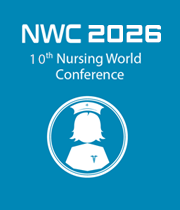Title : Takotsubo cardiomyopathy and attempted suicide: A review of the evidence
Abstract:
Background: Tako-tsubo Cardiomyopathy (TTC) is a relatively uncommon condition, mimicking myocardial infarction, with an estimated prevalence of approximately 1.7-2.2% of patients with suspected acute coronary syndrome [Bossone et al, Heart Fail Clin 2013]. Diagnosis is defined by Mayo Clinic criteria [Prasad et al, Am Heart J 2008]. Many physical or emotional stressors can trigger TTC [Summers et al, Heart Fail Clin 2013]. We aimed to check for the relationship between suicide and TTC.
Methods: We performed a systematic search on PubMed database and Google Scholar source, by using the keywords ‘takotsubo cardiomyopathy’ and/or ‘stress-induced cardiomyopathy’, in combination with ‘suicide’ and ‘attempted suicide’. Deadline for search was December 31, 2017.
Results: We found 12 items, reporting 13 cases (Table). The majority of patients were women (n=9, 69%), and the mean age was 37.5±21.8 years (range 65, 15–80). Suicidal methods included self-poisoning (n=6, 46%), hanging (n=6, 46%), and jumping from high (n=1.8%). Potential triggering conditions were present in six cases (46%), not present in one (8%), and not reported in six (46%). Outcome was favorable in 13/13 cases (100%).
Discussion: Suicidal ideation accounts for more than 400,000 annual emergency department (ED) visits in the USA [Ting et al, Gen Hosp Psychiatry 2012]. In agreement with literature data, in our sample, self-poisoning and hanging represented more than 90% of cases. Emotional or physical stress is a common trigger for the development of TS, and attempting suicide undoubtedly represents highly stressful condition. Catecholamine hyperactivity is the basis for the regional differences in negative inotropism, due to different density of β1- and β2-adrenoceptors [Lyon et al, Nat Clin Pract Cardiovasc Med 2008]. A further possible trigger factor could be represented by paroxysmal sympathetic hyperactivity (PSH) [Meyfroidt et al, Lancet Neurol 2017]. In fact, severe anoxic brain injury following hanging/suffocation and drug poisoning may trigger the onset of TTC. Thus, after suicidal attempt, emergency staff should maintain high level of attention even during the immediate hours following a successful rescue intervention.



